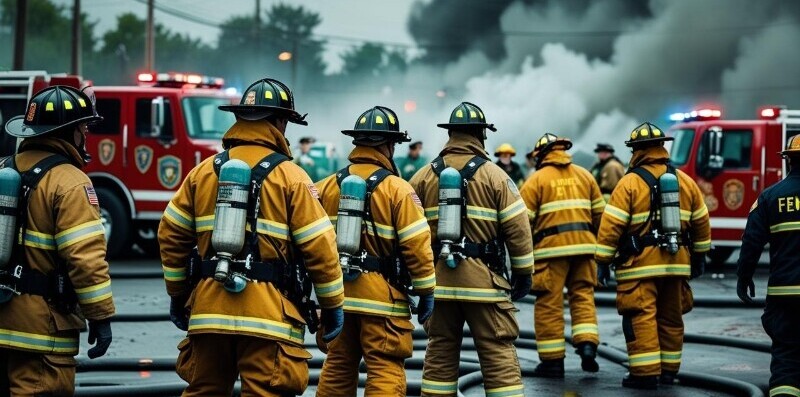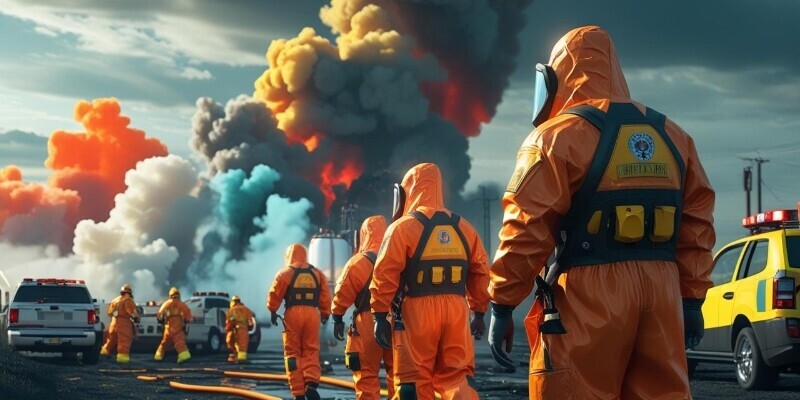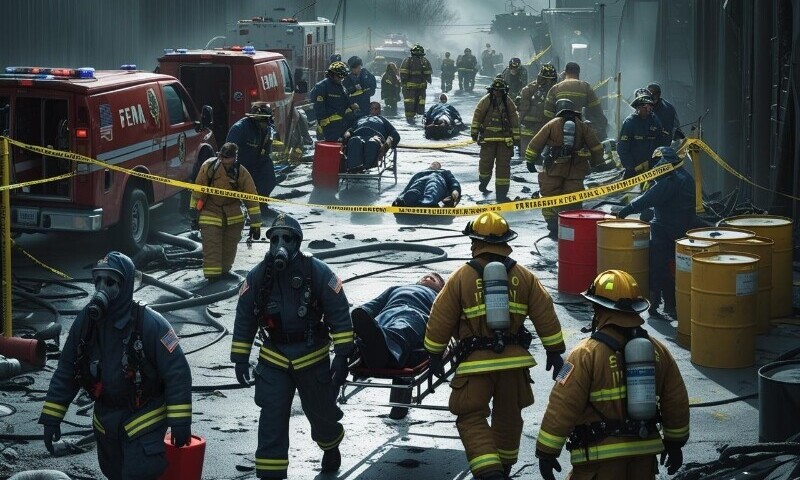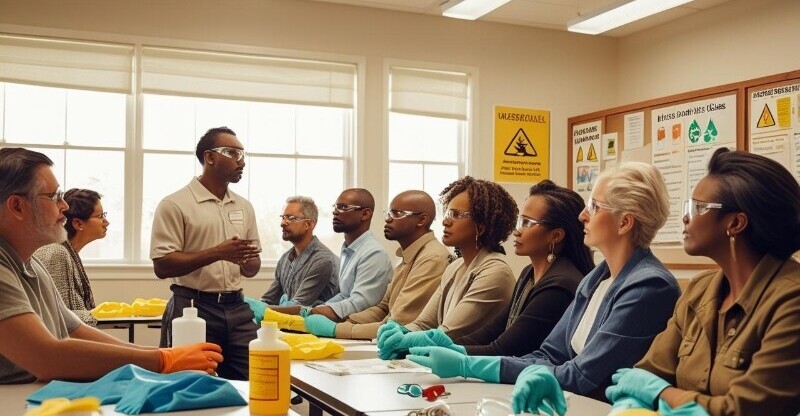Chemical disasters often strike with little warning, threatening public health, the environment, and often, entire communities. Understanding what exactly constitutes a chemical disaster is crucial. These incidents usually involve the accidental release of a hazardous substance, which can result in widespread harm. Think of industrial accidents or the unintentional spread of toxic chemicals—like what happened during the Bhopal gas tragedy in India, one of the worst industrial disasters ever.

These incidents leave lasting scars on not just the immediate area but can have repercussions that affect economies and ecosystems far beyond the initial zone of impact. It’s not just about the immediate harm but also the ripple effects that can stretch over time and geography.
The role of emergency services becomes a lifeline in such scenarios. Imagine this: a coordinated team ready to jump into action, containing damage, and working meticulously to reduce harm. They aren’t just the first responders; they are the front line of defense. Their swift, informed actions help protect human lives and our environment, making their preparedness and efficiency paramount. Through their efforts, we see the focus on people-oriented protective measures, where every move is carefully calculated to safeguard the most precious asset—human life.
Evaluating and understanding past chemical disasters is one way emergency services enhance their strategies. By studying these events, they learn and adapt, improving protocols and response procedures. This continuous learning loop ensures that when a disaster does strike, the response is quicker, safer, and more effective, showcasing the dedication to not just reacting but preemptively planning and educating.
Rapid Response: First-Line Measures in Chemical Emergencies

Getting the situation under control as quickly as possible is where emergency services truly shine in chemical disasters. When every second counts, immediate actions are crucial. Rapid assessment of the situation is the first step. Identifying the type and scale of the chemical involved lays the groundwork for all subsequent actions. It’s a high-pressure situation, where decisions need to be both fast and calculated without room for second-guessing.
Once the nature of the threat is clear, containing the hazard becomes the next priority. Teams move swiftly to prevent further spread, employing barriers or specialized equipment designed to control or neutralize hazardous substances. It’s all about making sure that the damage is minimized and secured, keeping the danger from escalating or affecting larger areas.
Communication plays a vital role here. Informing and instructing the public on safety measures is key to ensuring their well-being. This involves clear and concise communication, usually over multiple channels to ensure everyone, from local residents to those in surrounding areas, understands the situation and what they need to do to stay safe. Whether it’s evacuation or sheltering in place, timely and accurate information can reduce panic and confusion.

Personal protection for first responders can’t be ignored either. Proper gear matters a lot when dealing with toxic substances. From hazmat suits to breathing apparatus, ensuring the safety of the emergency teams is just as important as protecting the public. It ensures they can perform their duties without becoming the next victims of the disaster.
Preparation and reflexive action in these critical moments exemplify the efficiency and dedication of emergency services. Through training and rehearsals, they streamline responses to what is an undeniably complex and hazardous situation. It’s about precision and care, balancing risks, and applying the right measures to safeguard lives.
Coordinating Multi-Agency Collaboration in Managing Chemical Disasters

In the chaos of a chemical disaster, effective coordination between different agencies can make all the difference. When multiple teams come together, their combined efforts create a formidable defense against potential harm. Each agency brings its own expertise and capabilities to the table, creating a network of support.
Identifying the key players in these situations is crucial. Fire departments, medical teams, environmental agencies, and sometimes military units may all have roles to play. The synergy among these groups is vital for an efficient response. It’s about trust and understanding each group’s strengths and responsibilities in managing the crisis effectively.
Communication is the glue that holds this collaboration together. Ensuring all agencies are on the same page minimizes the risk of errors and duplicated efforts. Real-time information sharing is essential—whether that’s through radio, secure internet channels, or face-to-face briefings. Each moment saved can translate into lives saved and less environmental impact.
Looking at past incidents shows how multi-agency teamwork has been key to success. For instance, in various industrial accidents, working together has meant quicker containment and more thorough clean-up campaigns, lessening long-term damage. Sharing resources, like specialized equipment or personnel, and knowledge can enhance response capabilities and situational adaptation.
Such collaborations also pave the way for stronger future preparedness. By learning from every crisis and refining protocols collectively, emergency services improve over time. This interconnected approach ensures that when faced with the unpredictability of chemical disasters, the response is not just reactive but also strategic and informed. Through training exercises and developing joint protocols, agencies can sharpen their readiness, ready to tackle the next challenge head-on without missing a beat.
Community Engagement: Educating and Empowering the Public

Community awareness is a powerful tool in reducing the impact of chemical disasters. When people understand the risks and how to respond effectively, they’re not just passive observers but active participants in their own safety. Educating the public about chemical hazards and safety procedures is essential. It’s about giving them the knowledge they need to make informed decisions under pressure.
Structured training programs serve as a cornerstone in this educational effort. Organizing workshops and drills can demonstrate best practices in action, from evacuation protocols to basic first aid. These sessions often provide practical, hands-on experience that goes beyond what a pamphlet or manual can offer. When the real deal happens, practice can replace panic, leading to a more orderly, confident response from those affected.
Building a culture of safety starts at the community level. Sharing information about potential chemical threats prevalent in the area helps foster an environment where safety isn’t just prioritized during a crisis but is an ongoing engagement. Reinforcing this mindset can minimize needless fear, steering the community toward action rather than anxiety.
Promoting transparency and open dialogues about potential threats and existing safety measures can further empower individuals. This kind of engagement builds trust and makes people feel more connected to, and responsible for, community well-being. Public participation in emergency planning helps to tailor responses to the specific needs and characteristics of the community, maximizing effectiveness and ensuring resources and responses are appropriate to the unique local context.
By encouraging residents to become informed as well as involved, emergency services can extend their reach and effectiveness. Communities well-versed in safety protocols and disaster responses act as the first line of support, sometimes even before emergency teams arrive. Preparing people involves weaving safety into the very fabric of daily life, making community collaboration an invaluable asset in managing chemical risks.
Future Directions: Enhancing Emergency Services for Better Preparedness
Advancing emergency services is a continuous journey of improvement and adaptation. Embracing new technologies can revolutionize response efforts. Drones, for example, offer valuable perspectives on hazardous situations without risking human life. Whether it’s scanning large areas for chemical leaks or delivering supplies to inaccessible zones, technology is becoming an indispensable ally.
Equipping emergency personnel with the latest tools ensures they can tackle even the most complex chemical disasters efficiently. From advanced sensors that detect airborne toxins at low concentrations to automated decontamination units, these innovations streamline processes and enhance safety.
Policy improvements also hold significant potential for change. These include stricter regulations on chemical storage and transportation and enhanced safety protocols that can mitigate the risk of disasters happening in the first place. Learning from past incidents, policies can be drafted to lower accidental chemical releases and enhance coordinated efforts among agencies.
Continued training and development for emergency teams are foundational to maintaining a high level of readiness. Regular drills, both live and simulated, keep skills sharp and introduce team members to new techniques and equipment. Such practices ensure that responses are swift and learned, minimizing the chaos typically associated with chemical emergencies.
Fostering a future-focused approach also involves advocating for increased funding for emergency services. This can improve infrastructure, boost research initiatives, and offer advanced training opportunities. By investing now, emergency services can be better equipped to protect communities, steering them away from potential disasters and toward a safer tomorrow.

This is a fantastic overview of the critical role that technology and community engagement play in advancing emergency services! The integration of drones and advanced sensors truly revolutionizes how we approach hazardous situations, allowing responders to act swiftly and safely. I particularly appreciate the emphasis on community awareness and involvement—when residents are educated about chemical hazards and safety protocols, they become empowered to take action during emergencies, which can significantly improve outcomes.
Structured training programs and workshops are essential, as they not only equip individuals with the knowledge they need but also foster a culture of safety within the community. It’s inspiring to think that by investing in education and open dialogue, we can create a more resilient society that collaborates effectively with emergency services. Let’s continue to advocate for these initiatives and ensure that safety becomes a shared responsibility!
I never realized that emergency services had such a huge role to play in these chemical disasters. They have to be so well trained so that they can coordinate themselves calmly during a crisis and each person has to know their role so well so that the rescue process runs smoothly.
It must be a mammoth task for the people running the training to make sure that everything is in place for every emergency.